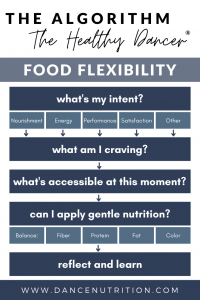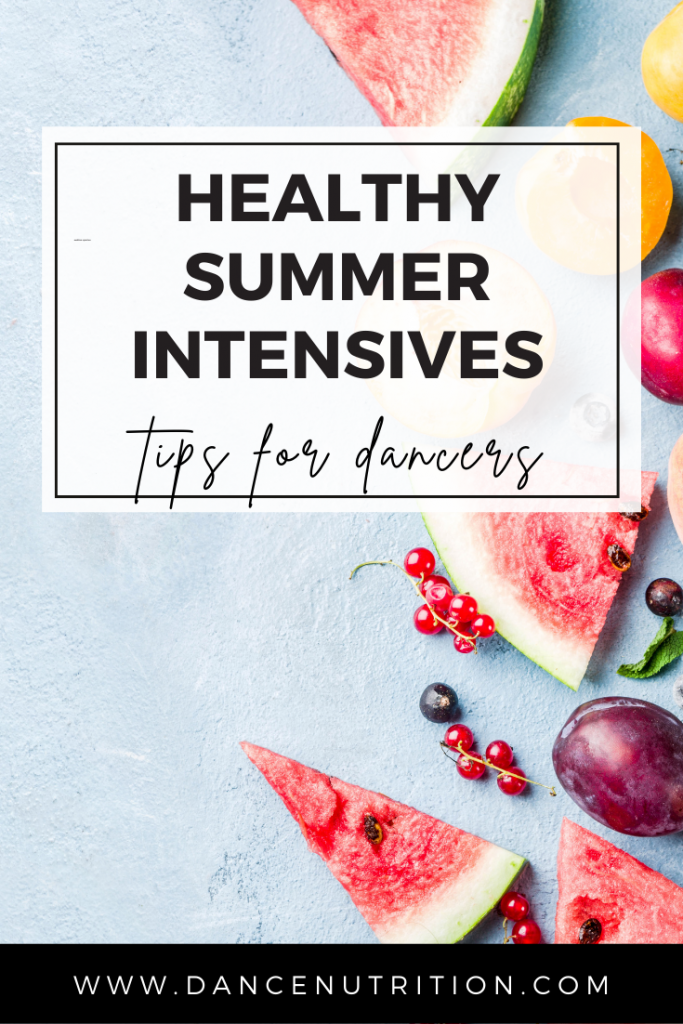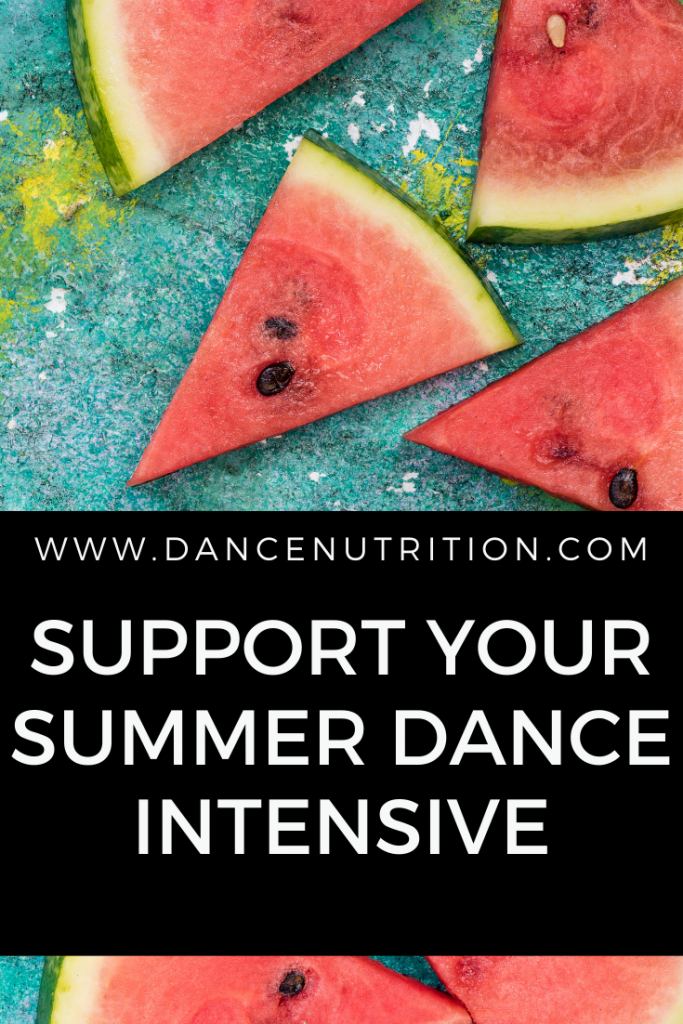Summer intensives are an enormous investment of a dancer’s time, energy, and money. New teachers, choreographers, and peers broaden a dancer’s network and help to create relationships that last a lifetime. These programs also offer dancers an incredible opportunity to sharpen their technical skills while providing the potential for future studies— full-time trainee programs, apprenticeship contracts, and invitations to junior companies are all on the table.
But among these benefits are the inevitable challenges faced when dancing in a highly competitive environment.
Summer Dance Intensives: The Challenges
Dancers are not immune to the many obstacles that can impede their performance potential— it’s the nature of a competitive industry that is unfortunately, rife with unrealistic food, body, and exercise ideals.
Summer intensives intensify those pressures. Overtraining puts dancers at risk for nutritional inadequacies, resulting from eating too few calories to meet their increased needs. Disordered eating can also result from newfound habits surrounding goals for weight loss, “clean” eating, and achieving an idealized body— sacrificing a dancer’s well-being and increasing their risk for injury.
If a dancer is already navigating a poor body image and restrictive eating patterns, summer intensives can intensify the struggle. If that’s the case, taking time to reflect on your current status might be important before heading to an intensive. Click here to learn more about how dancers can evaluate their readiness for a summer intensive.
Nutrition for Your Summer Intensive: Start By Eating Enough
If you’re enrolled in a summer dance intensive, chances are you’re dancing above your baseline. Mornings of classes are followed by afternoons of rehearsals. During this extreme level of training, your body expends higher levels of energy when compared to your year-round schedule. This increased energy demand comes alongside a greater need for fuel. Without enough calories, you’ll experience energy dips and an inability to concentrate. By September, you may run into injury and even burnout.
In my experience as a dietitian for dancers, under-fueling is common whether intentional or unintentional. Three meals and multiple snacks are a starting point, but individual calorie needs will vary. Once you’ve identified an amount of food that will support you, careful attention to the specifics of your meal plan is encouraged to ensure peak performance and recovery. Let’s dive into a few.
Support your summer with a healthy meal plan
#1: Balance Your Meals
Dancers need a mix of carbohydrates, proteins, and fats to fuel their bodies and support muscle repair and growth. Carb-rich foods provide the preferred energy to move you through an active day. Opt for complex carbs like whole grains, fruits, and starchy veggies. Protein is essential for muscle repair and is found in meat, dairy, dairy-free alternatives, beans, lentils, nuts, and seeds. Fats from sources like avocados, nuts, and olive oil help in absorbing vitamins and providing sustained energy. Here are three additional articles to learn how to gain the most from each macronutrient:
#2: Consider Meal Timing
A busier and more active schedule means you’ll need to put extra effort into when and how often you eat. In The Healthy Dancer®, we utilize proactive fueling as a fundamental tool to support every and focus all summer.
A nutritious breakfast kick-starts the metabolism and provides energy for morning sessions. It’s important to replete glycogen (it depletes naturally while we sleep). Not only will you support your energy, but you’ll sharpen your concentration in class. Be realistic and plan: keeping a few items in your dorm or at home will be helpful for mornings when time is limited. Frozen waffles can be toasted and topped with nut butter. Oat bars can be paired with a shake or homemade smoothie. These options will also keep you hydrated, another key component to support your summer dance schedule (read more about building a hydration plan here).
From there, eat energy- and nutrient-dense meals and snacks every 2-4 hours. Wraps, sandwiches, and trail mix are examples. Wrapping up your day with a high-protein and high-carbohydrate snack will aid muscle recovery and replenish glycogen stores for your next day of dancing. This snack isn’t your dinner, but a recovery addition until you get to that meal.
#3: Plan Your Snacks
Since summer schedules often take dancers into the studio from morning to night, it’s critical to consider convenient snacks that are packable and easily accessible even during a 2-minute bathroom break. If you’re residing in a dorm, fill your room with options lacking in the cafeteria. For more support on living in a dorm, check out this article. Fresh fruits, bags of nuts, pretzels, trail mix, bars, yogurt, whole-grain crackers, and cheese sticks are easy to carry and quick to eat. For packaged food, identify whole ingredients like nuts, seeds, fruit, veggies, and grains. These will provide quality sources of nutrients to fuel your movement. An easily digestible example is a banana with seed butter. For more inspiration, check out my The Healthy Dancer® Survival Guide: Summer Intensives!
#4: Focus on Food Flexibility

Food flexibility encompasses a practice I’ve discussed previously. It allows dancers to adapt to an ever-changing food environment. The more flexible you are in your food choices, the more willing you are to move through life’s vast experiences with agility and ease.
This is especially helpful for dancers living in dorms. Since the cafeteria will be most accessible, you’ll need to be flexible with their offerings (which can sometimes be limited). Utilize The Healthy Dancer® Food Flexibility Algorithm to identify options that support your whole being without getting trapped in the “clean” eating mindset. You’ll learn to prioritize food as nourishment while implementing nutrition education less obsessively.
#5: Avoid Common Pitfalls
Under-fueling is the big one here. You’ll need to ensure you’re eating enough each day and the tips for proactive meal and snack planning I mention above will help. Also, caution with being overly reliant on caffeine to push through summer dance schedules. While a moderate amount of caffeine can boost performance, too much can replace opportunities to fuel and hydrate. Last, incorporate beverages to replenish electrolytes lost through sweat. Coconut water paired with a salty snack, and sports drinks, can help.
Seek Support
Nutrition will play a key role in your success this summer, as will your relationship with food. By integrating these nutritional strategies, dancers can maximize their performance, recover effectively, and make the most out of their summer dance intensives. To take your efforts further, consult a Registered Dietitian Nutritionist who can craft a plan for a more intense schedule. The Healthy Dancer® and The Healthy Dancer® Summer Intensive offer additional opportunities for dancers to support their summer.




